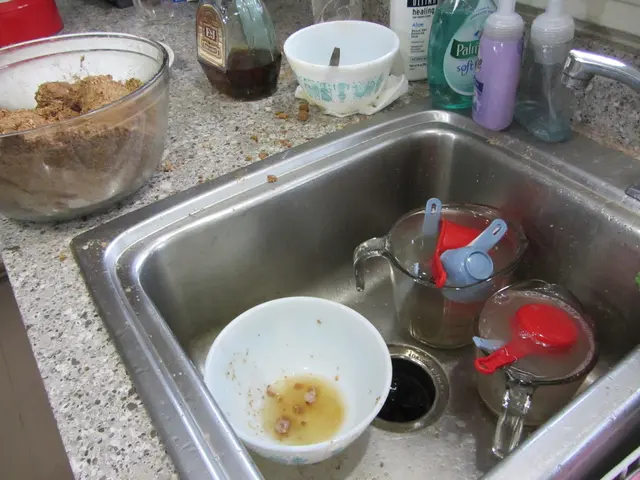Indirect Bright Light: The Preeminent Luminescence in Tropical Environments
Torching Up Your Terrarium: All About Bright Indirect Light for Tropical Plants
If you're a proud owner of various tropical houseplants or a terrarium enthusiast, you're probably familiar with the annoyance of adjusting their location to keep them flourishing. Just when you think you've got it all figured out, the seasons shift, and you're back to square one.
Luckily, most tropical plants and terrariums share similar lighting preferences, making things a bit easier. Let's discuss what's considered bright indirect light, how to identify it, measure it, and provide your plants with all the sunlight they crave without scorching them.
First Things First: What's Bright Indirect Light?
Bright indirect light is sunlight that has passed through or bounced off another surface before reaching your plants. Sure, it may sound convoluted, but the majority of the natural light inside your home is indirect[1].
Think of it like a stray ball bouncing off (or going through) a wall. The process of hitting different surfaces weakens the light rays, depending on the intensity of the initial hit and the surface properties.
Examples of indirect light include ambient room lighting, filtered light through blinds or curtains, and reflected light from walls and surfaces[2].
Direct Sunlight vs Indirect Sunlight
Identifying indirect light is like sniffing out a neutral scent. Look for what it's not.
Can you:
- See defined rays of light streaming through your window?
- Detect any harsh shadows from objects in front of the window?
- Feel the warmth of the sun on your skin?
If no to all, it's probably indirect light.
When Terrarium Glass Comes into Play
There's a misconception that glass terrariums amplify sunlight and can burn your plants, but have you witnessed this happening?
While it sounds plausible in theory, research suggests that glass primarily diminishes light intensity. Though a shaped terrarium might focus light in certain areas, burning isn't likely due to light magnification[3].
Keep in mind that light exposure can still be harmful to terrariums, which act as greenhouses and trap heat[3]. Direct sunlight poses risks, but burning through light amplification seems unlikely.
So, What Is Bright Indirect Light?
"Bright" is a vague term, but for plants, we're referring to high-intensity indirect light that's strong enough for growth yet gentle enough to avoid damage. The intensity of indirect light varies based on factors such as plant distance to the window, surrounding objects, and various obstructions[1].
Measuring Light for Tropical Plants
Get yourself a plasma lamp or a plant-specific light meter to measure light intensity in numbers rather than ambiguous terms[1]. Greenery Unlimited suggests 75-150 foot-candles (800-1600 lux) for indirect light[1]. However, introducing more foot-candles won't necessarily burn the plants.
You might also find light-measuring apps that claim to be accurate, but it's essential to find one you trust[2].
Take note that natural light constantly changes, making it challenging to maintain a perfect, consistent lighting environment[4]. However, try to avoid exposure to direct sunlight and place the plants as close to the light source as possible[4].
The Challenges with "Ideal" Sunlight
Unfortunately, there's no such thing as an ideal natural lighting solution since sunlight is constantly changing. So, it's essential to find a lighting environment that gives your tropical plants the most of their ideal sunlight while minimizing non-ideal sunlight, such as direct sunlight or too little.[4]
One approach is to place all tropical plants in the East-facing windowsill. As the sun rises in the East, the plants might get too much sunlight for a few hours, but they'll enjoy consistent indirect light for the rest of the day[4].
Maximizing Indirect Light for Darker Homes
Getting bright indirect light in darker homes can be tricky, but there are strategies to intensify indirect light:
- Add mirrors directly to your windows or behind your terrarium to help light penetrate further[2].
- Paint your walls white, which can help increase ambient light and create a nice backdrop for your plants[2].
- Use LED grow lights for a more natural-looking white light[2].
Key Takeaways
- Identify bright indirect light by visual cues like diffuse, soft shadows and placement off of direct sunlight[1].
- Measure light intensity using a plant light meter or plasma lamp for more accurate assessment[1].
- Adjust plant placement, and monitor changes throughout the day and seasons for optimal growth[4].
Terrarium Lighting Frequently Asked Questions
Q: Do terrariums need sunlight?A: Yes, just like any other planting method, terrariums require sunlight for their plant inhabitants to thrive.
Q: What are typical terrarium light requirements? How many hours of sunlight should a terrarium get each day?A: Ideally, tropical terrariums should receive full day bright, indirect sunlight[2].
Q: Are there any terrarium plants that don't need sunlight?A: All plants, even low light terrarium plants, need some degree of light for photosynthesis.[6]
Q: What is considered direct sunlight?A: Technically, direct sunlight would be light rays reaching the plant unobstructed at full strength, but in indoor plant terms, it's any light coming through a window onto the plant, as long as it hasn't been reflected or further weakened[2].
Q: Why should the terrarium not be placed in direct sunlight?A: Terrariums should avoid direct sunlight because their plants can't tolerate the sunlight's intensity, and it can cause excessive heat buildup inside the terrarium[7].
- Incorporating elements of science and health-and-wellness, one could research the effects of bright indirect light on health to understand if and how exposure to this type of light may positively impact our well-being and stress levels.
- A balanced diet is crucial for maintaining overall health, but did you know that nutrient-dense fitness and exercise routines can also contribute to optimal health? Delving into the world of nutrition and fitness, one could study how various exercise regimens complement nutrient-rich diets to promote overall wellness. For instance, investigating the role of protein in muscle recovery after physical activity or examining the importance of staying hydrated during workouts could provide valuable insights.





